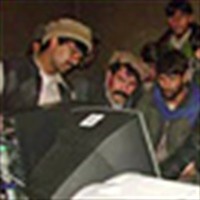
Wireless electronic network contributes to effective governance
Challenge
Never before in the country’s history has the central government been be able to communicate directly with all of the provinces, nor the provinces with each other. This lack of communication made it difficult to govern effectively.
Initiative
USAID, in collaboration with Afghanistan’s Ministry of Communication, is implementing a $290,000 initiative to link the Kabul-based Afghan government with its 32 provincial governments through an electronic network. USAID is funding equipment purchase and personnel training. The Ministry is funding operational costs, including maintenance and repair in Kabul and the provinces. The equipment–high frequency radio sets–can send voice messages, e-mail, and scanned documents, as well as operate as a telephone. The system, connected to the local and international phone/e-mail systems in Kabul, will enable central government officials to have two-way communications with the provinces, and the provinces will be able to communicate with each other. An added benefit is that the system will also be open to the general public on a fee basis.
Results
The first phase of the project began in mid-December 2002 with training and installation of radio sets in Kabul and the provinces of Khost, Paktia, Paktika, Bamyan, Nooristan, and Kunduz which were identified by the government as its highest priorities. wo of the provinces–Paktika and Nooristan–have never been connected directly to Kabul before. The Ministry of Communication is committed to having all high-frequency radio sets in place by the end of March. A major step in the stabilization of the country, this will be of enormous benefit to the average Afghan citizen, who will benefit from a more efficient and more responsive government.







Comment
Make a general inquiry or suggest an improvement.